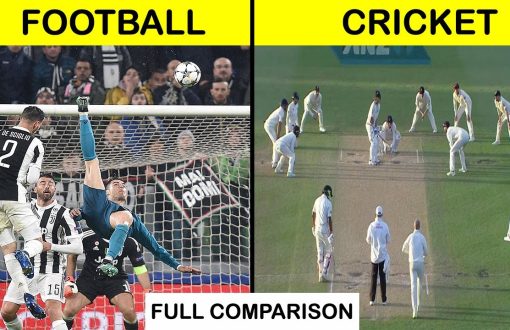Working Capital: Know How to Calculate your Business Working Capital Requirement

Introduction
Working capital assesses a company’s ability to pay current liabilities with current assets, revealing its short-term financial health, along with the ability to pay off debts within a year and also operational efficiency.
Working capital is the distinction between a company’s current assets and liabilities, also known as Net Working Capital (NWC).
Your Working Capital Requirement is the amount of money required to cover your operational expenses (WCR). It represents your company’s short-term funding requirements. The source of these requirements is a gap in your cash flows, that is, money coming in and out related to cash inflow and also cash outflow, which is linked to your business operations or your company’s main activity.
Three primary factors cause the occurrence of these gaps:
- Time it takes to sell inventory
When a company produces a certain quantity of goods, liquidating that inventory can be time-consuming. As a result, there is a time lag between when the money is spent on manufacturing and also when cash is received when goods or services are sold.
- Client payment schedules
While payment is earned and stated at a specific time, it is frequently delayed before being resolved. This means a company can spend money making goods or providing services but may not receive payment for days, weeks, or months.
- Payment terms for suppliers
Companies rarely manufacture their products from the ground up; instead, they rely on suppliers for raw materials. Suppliers may sometimes demand reimbursement before the company has sufficient funds to cover its costs. If this is the case, then the company is also obligated to these external parties for the time it takes to obtain the money from selling its products or services once the production cycle has begun. As a result of early cash outflow, the company’s WCR will rise.
Working Capital Elements
Working capital is calculated using two primary components or accounting terms:
- Present Assets
The value of a company’s current assets, which is both tangible and intangible that, can be easily converted to cash in a single year or business cycle, whichever comes first. Existing assets include checking and savings accounts, along with highly liquid marketable securities such as stocks, bonds, mutual funds, along with exchange-traded funds (ETFs), money market accounts, cash and also cash equivalents, accounts receivable, inventory, and also other shorter-term prepaid expenses.
All current assets in the business, except cash, are also considered in the working capital calculation procedure. One of the most critical aspects of liquidity is available money, which fluctuates regularly due to either receipt or payment. Including current assets in the equation does not provide an accurate picture of the company’s liquidity.
- Current Obligations
On the other hand, current liabilities consist of all debts and also expenses that the company wishes to pay off within a year or else one business cycle, whichever comes first. This category includes rent, utilities, materials, and also supplies; interest or principal debt payments; accounts payable; accumulated liabilities; and accrued income taxes.
Dividends due, the capital leases due within a year, and current long-term debt are all included in this category.
Working Capital Determination
Working capital is calculated using the current ratio, defined as existing assets divided by current liabilities. A ratio that is greater than one indicates that current assets outnumber current liabilities, and the higher the percentage, the better.
Current Assets / Current Liabilities = Current Ratio
Working capital and net working capital differ only in how they are reported: net working capital is a sum, whereas the working capital is a ratio.
What is a Beneficial Working Capital Ratio?
A good working capital ratio is 1.5 to 2, indicating that a company’s financial health is in good shape in terms of liquidity. An active capital ratio of less than one is regarded as unfavorable, suggesting the possibility of future financial problems. Negative working capital is an exception in organizations that generate cash quickly and can sell products to customers before paying suppliers.
Example of Working Capital Calculation
Assume that some XYZ company has a total current asset value of Rs. 5,00.000 and a full current liability value of Rs. 2,00,000.
Current Assets / Current Liabilities = Working Capital Ratio
= 5,00,000 / 2,00,000
= 2.5
This means that the firm XYZ has Rs. 2.5 in current assets for every Rs. 1 in current liabilities.
What does your working capital reveal about your company?
Though working capital is also a simple calculation, it can also disclose a lot about your company’s health. An active capital ratio of less than one, for example, indicates that your company is having serious liquidity issues and does not have enough current assets to cover current liabilities.
It can also show potential investors and financial institutions that your company is stable and working within its financial means to meet any upcoming obligations.
FAQs about calculating working capital requirements:
- What is the definition of Net Working Capital?
Net working capital (NWC) is calculated by subtracting current liabilities from current assets. For example, suppose the firm’s current assets are Rs. 2,50,500, and its current liabilities are Rs. 1,25,000. The working capital is then calculated to be Rs. 1,25,500.
- Why does a company need more working capital?
Additional working capital is advantageous for the following reasons: – Must meet obligations to suppliers, employees, and the government while customers are paid. – more funds to prepare for a busy season or to keep the business running during a period of low revenue. – Additional working capital can help the company grow in other ways, such as purchasing in bulk to take advantage of supplier discounts. – Working capital can also be used to cover temporary workers’ costs or other project-related expenses.
- What exactly is a Quick Ratio?
The quick ratio and also the current ratio are very similar. The only distinction is in the total existing assets. Inventory is excluded from the quick ratio because it is more difficult to convert into cash in the short term.
- What does a current ratio of less than one indicate?
It means that the company faces the risk of not being able to pay its expenses on time, and investors view it as risky.



